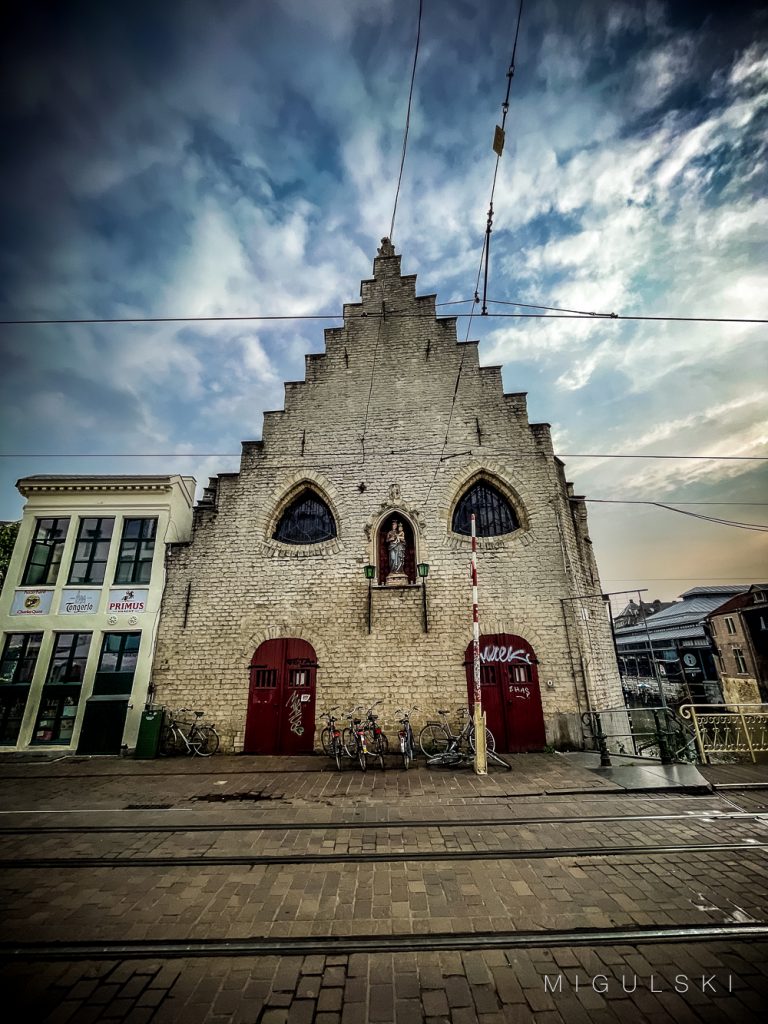
The sale of meat was centralized in meat halls or meat houses in the Middle Ages to control the sale of meat. The home sale of meat was prohibited. Every medieval town had one or more meat houses. In the late Middle Ages, Ghent had a Great Butchers’ Hall on the Vismarkt (now Groentenmarkt) and a Small Butchers’ Hall near the Brabantpoort. The Klein Vleeshuis presumably already existed in the 14th century.
The Groot Vleeshuis was more centrally located and was already mentioned in the city accounts of the year 1332-1333. It must have existed for many years then, because the first mention of the meat house would date from 1251. The oldest meat house could not be compared to the current building. It was a wooden house that was much smaller and that did not reach the Vleeshuis bridge. Between this bridge and the oldest Vleeshuis there was a mooring place to unload the fish from the Leie to the Vismarkt. Until 1690, the Groentenmarkt was Ghent’s central fish supply point.
Around 1400, that wooden meat house had fallen into disrepair. The butchers commissioned the city architect Gillis de Suttere from 1407 to build a new building that was large enough to lease a private meat bank to each member of the great trade. Between 1446 and 1448, the building was extended in a southwesterly direction by three bays for a chapel with meeting room, dedicated to Saint Hubert. To continue to guarantee the supply of fish, four canals were built under the meat house. As before, the flat fishing boats could reach the Vismarkt directly from the Leie. The vaults of these crossings are still clearly visible on the side of the Leie. In 1543, sixteen tripe houses were added. In these shops, viscera, intestinal fat and other remains of animals for slaughter were sold in addition to poultry, which was not allowed in the meat house.
Changes at the Vleeshuis
The Groot Vleeshuis became vacant at the end of the 19th century due to the construction of a new meat house next to the Vismijn on Sint-Veerleplein. From the end of the 19th century, the meat was also allowed to be sold at home. With a view to the World Exhibition of 1913, it was decided to restore the Groot Vleeshuis and the tripe houses to their pre-1744 condition, according to plans by architect Van Hamme. The Groot Vleeshuis was given various new uses, including a fruit and vegetable market, post and telegraph office, parking garage and partial fish trade. The unique hall building was listed as a monument in 1943 and underwent a general restoration at the end of the 1990s. Until 2021, the building was used as a promotion center for East Flemish regional products (the center moved to the Gouden Leeuwplein under the name OOOST).
In 2023, commotion arose when the city of Ghent announced plans to restore the Groot Vleeshuis and to set up a bicycle shed. Experts called it a “light intervention” that hardly required renovations and that also ensured free access to the building. Flemish Minister of Heritage Matthias Diependaele regretted the decision and would have liked an interpretation that was closer to the “original function”. Source: Wikipedia.





